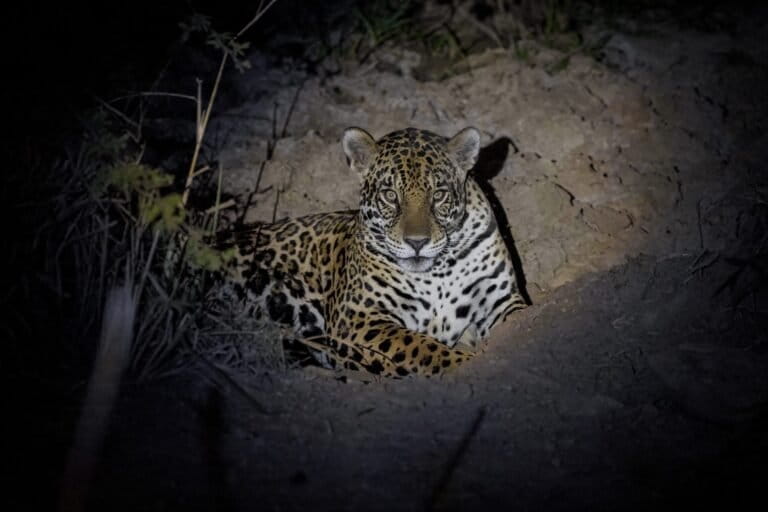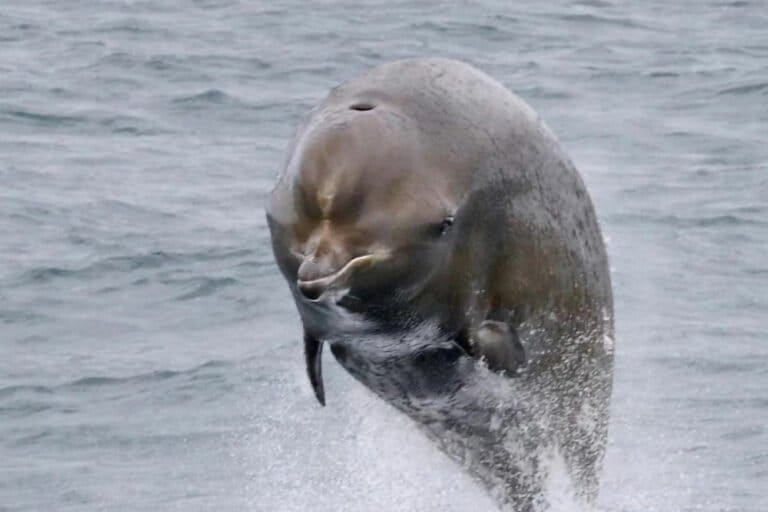- Researchers discovered the brilliantly colored rainbow chameleon, now named Calumma uetzi, during an expedition to the remote Sorata massif in northern Madagascar in 2012.
- Over surveys between 2015 and 2016, the researchers found another new species of chameleon, now dubbed Calumma juliae, in a 15-square-kilometer patch of forest. The researchers were unable to find any males of this species.
- They also found only a single male specimen of the third new chameleon species, Calumma lefona, spotted in Andrevorevo in northern Madagascar.
Researchers surveying Madagascar’s forests have discovered three new species of chameleons, including one that flashes rainbow colors and one that’s currently known only from a tiny patch of rainforest.
A team of German and Malagasy herpetologists found the brilliantly colored rainbow chameleon, now named Calumma uetzi, during an expedition to the remote Sorata massif in northern Madagascar in 2012. The males of this newly described species are usually greenish-beige with a tinge of blue on the sides of their faces, while the females are mostly brownish. But when the two sexes encounter each other, the male, in an attempt to win over the female, displays spectacular coloration, turning his body into a mosaic of yellow, red, blue-green and violet. A female that’s unimpressed changes color too, darkening her skin to nearly black, the researchers report in a new study published in the Zoological Journal of the Linnean Society.
The team named C. uetzi after Peter Uetz of Virginia Commonwealth University, U.S., who has been voluntarily developing and maintaining the Reptile Database for over 20 years, the authors write.
“This database is the most important online resource for information on reptile species, thereby providing a priceless service to herpetology and a model for what should be available for all organism groups,” they add.

Over surveys between 2015 and 2016, the researchers found another new species of chameleon, which they named Calumma juliae in honor of Julia Forster, who helped collect some of the specimens. The researchers found the new species just a few kilometers east of the city of Moramanga, in a 15-square-kilometer (5.8-square-mile) patch of forest close to a heavily traveled road.
So far, the researchers have been unable to spot any male individuals of this species, and have encountered only females.
“Probably the males just sit very high in the trees and we just have not met them yet,” David Prötzel, a doctoral student at Ludwig Maximilian University of Munich and lead author of the study, told Mongabay. “It might also be possible that there are no males in that population and that they are parthenogenetic” — capable of producing babies from unfertilized eggs — “but that is very unlikely and would be the first case in chameleons.”

By contrast, only a single male specimen is known of the third new chameleon species, Calumma lefona, which the researchers found in Andrevorevo in northern Madagascar. The species has a distinct spear-shaped nose flap or rostral appendage, the authors write, and gets its name from the Malagasy word lefona, meaning “spear.”
All of the three newly described species occur over very small areas, putting them at risk of extinction, the researchers say. Two of the three species, C. lefona and C. juliae, are currently known only from single locations, with the latter known from just a tiny forest fragment that is already threatened by habitat loss.
“Recent imagery from Google Earth shows that, since our discovery of this chameleon just two years ago, already a significant area of its little home has been lost to deforestation,” Prötzel said. “We hope that this area can be protected as soon as possible.”
“From everything we know about these species, they all have very small distribution ranges,” said study co-author Frank Glaw, head of the herpetology section of the Bavarian State Collection of Zoology (known in German as Zoologische Staatssammlung München, or ZSM).
“But right now, many new protected areas are being established in Madagascar, which will certainly be important for the future of Madagascar’s unique diversity,” he added.

Citation:
Prötzel, D., Vences, M., Hawlitschek, O., Scherz, M. D., Ratsoavina, F. M., & Glaw, F. (2018). Endangered beauties: micro-CT cranial osteology, molecular genetics and external morphology reveal three new species of chameleons in the Calumma boettgeri complex (Squamata: Chamaeleonidae). Zoological Journal of the Linnean Society.














